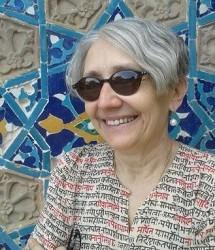Event

Please join us on Wednedsay, April 25, 2018, for Dr. Ines Zupanov's talk: Kulis and Ambassadors: A Catholic Brahman Mission to Sri Lanka 17th-18th centuries. Refreshments will be served at 4:00PM in the SAST conference room, Williams 826. The talk will begin at 4:30PM.
Please see below for the abstract.
-------------------------------------------From the mid-17th century, Catholic Goan elites, whose ancestors converted a century earlier and were called “newly converted Christians” before they reaffirmed their former and “natural” identity markers, such as Brahmans and Charodós, started their own social, cultural and “spiritual” promotion projects. In addition to historical narratives in perfect Portuguese in which they tried to prove their importance as “Indian” genealogists and philologists in service of the Portuguese Crown and empire, they also developed a missionary program to prove their Catholic and spiritual maturity.
The Congregation of the Oratory of the Sacred Cross of Miracle established in Goa in the last decades of the 17th century started as a small private group of “Indian” secular priests who offered their services to the Church as missionaries in Sri Lanka (Ceylon) from where the Portuguese were expelled and replaced by the Dutch in the middle of the century. In imitation of the Jesuits, their leader and a recently canonized saint, José Vaz, introduced accommodation into two different Sri Lankan missionary fieldwork areas, one in the lowlands under the Dutch control and another at the court of the kingdom of Kandy. For the first he chose light skinned missionaries who dressed as kulis, washermen, “spies” and similar professions, while for the second where he went in person, he chose dark skinned missionaries dressed in black cassocks associated with European missionaries.
By recruiting its members exclusively from the Catholic Brahman families in Goa, this Congregation was from the inception both a caste institution and a “new” religious order in Goa. Unable to achieve “spiritual” promotion, that is, to join one of the already established religious orders, these highly educated Brahman priests found their own way to break away from the perceptual prison in which they were locked by the Portuguese colonial and ecclesiastical administration as “native priests.” Openly discriminated against on the local ecclesiastical scene on the basis of their “heathen” heritage and their “tropical” psychological makeup, they were usually relegated to subaltern posts without benefits and honors. As the number of secular Goan priests was on the rise by the end of the 17th century, complaints about glass ceilings and the linguistic incompetence of the European pastors were getting louder.
The mission to Sri Lanka thus became for the Oratorians (or Milagristas, Padres Bragmanes) an ideal setting for the establishment of their own “primitive church,” away from the Portuguese colonial and ecclesiastical administration, something Jesuits tried to recreate in the Madurai Mission across the Gulf of Mannar and in other locations.
The Oratorian mission in Sri Lanka enabled writers like António João de Frias, a Brahman parish priest in Goa, to discursively articulate in the beginning of the 18th century the pro-Brahman arguments in the battle of identity politics regarding the status of ambitious Indian subjects. Shored up by the missionary experience of the Goan Oratorians, these Goan Catholic writers brought to light the inherent constancy of the Brahmans who were selflessly zealous missionaries in the present as they were in the past during the early Christianization of India at the time of St. Thomas the Apostle. The recreation of the sacred history of conversion and the mission in Sri Lanka were contemporary proofs of the old claim of the Goan Catholic Brahmans - that they were the natural priestly caste of the Indians. It was also a living proof that what Portuguese soldiers and missionaries were unable or unwilling to do in Asia for the benefit of the Portuguese Crown, the Catholic Brahmans could and would do just as well if not better.
